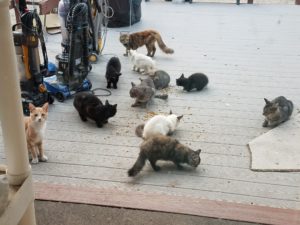 Have you ever known someone or knew of someone who kept more cats than seemed logical or healthy? Maybe you’re aware of someone who attracts feral cats to the neighborhood by feeding them. I was once aware of a house where a lot of cats lived inside and out. People talked about the crazy cat lady who resided there. You’d see cats wandering around everywhere, lounging on the porch, peering out from under shrubs, and from inside through the windows of the
Have you ever known someone or knew of someone who kept more cats than seemed logical or healthy? Maybe you’re aware of someone who attracts feral cats to the neighborhood by feeding them. I was once aware of a house where a lot of cats lived inside and out. People talked about the crazy cat lady who resided there. You’d see cats wandering around everywhere, lounging on the porch, peering out from under shrubs, and from inside through the windows of the 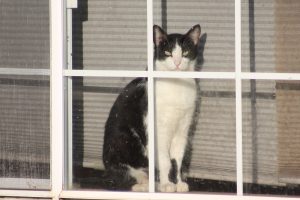 rundown house. In fact, my step-grandmother might have been considered a hoarder as she kept dozens of cats in her home and in one large aviary-type cage in her backyard. From what I understood, she’d rotate the cats from inside to outside so every cat had the same treatment. She had a running vet bill because she made sure they were all spayed and neutered and healthy.
rundown house. In fact, my step-grandmother might have been considered a hoarder as she kept dozens of cats in her home and in one large aviary-type cage in her backyard. From what I understood, she’d rotate the cats from inside to outside so every cat had the same treatment. She had a running vet bill because she made sure they were all spayed and neutered and healthy.
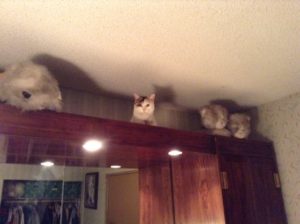 I was a kid then, but I wonder now, did anyone ever check to make sure she was taking care of those cats? Or did people do as most of us do and just drive by and point a finger at the crazy cat lady-house. I don’t know of any authorities ever having checked on my step-grandmother’s cats, but I do know that people regularly dropped unwanted cats off at her place, thinking, “Kathleen will take care of him—no guilt here for abandoning this cat.”
I was a kid then, but I wonder now, did anyone ever check to make sure she was taking care of those cats? Or did people do as most of us do and just drive by and point a finger at the crazy cat lady-house. I don’t know of any authorities ever having checked on my step-grandmother’s cats, but I do know that people regularly dropped unwanted cats off at her place, thinking, “Kathleen will take care of him—no guilt here for abandoning this cat.”
Now that I’ve read more about, and even written about, cat hoarders, kitten mills, and 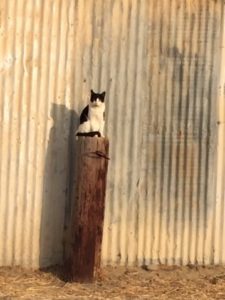 such, I see things from a different angle. The Internet, reality TV, and just the process of living and learning has opened my eyes over the years, to what was once hidden and pretty much ignored. I now know, and I hope you do to, that if you see something suspicious where cats are involved—someone is trying to care for too many of them, the cats look unhealthy or stressed, etc., you should say something.
such, I see things from a different angle. The Internet, reality TV, and just the process of living and learning has opened my eyes over the years, to what was once hidden and pretty much ignored. I now know, and I hope you do to, that if you see something suspicious where cats are involved—someone is trying to care for too many of them, the cats look unhealthy or stressed, etc., you should say something.
Did you know that it is illegal in some states and communities to feed stray cats? One woman in Ohio has paid thousands of dollars in fines and even spent ten days in jail for trying to help feral cats in her neighborhood.
 I may have been breaking the law here in California when I fed the stray that set up housekeeping in my garage a month or so ago. I’m not sure of the logic behind this law—should I have let the cat try to figure out how to feed himself? I have to say he didn’t seem skilled enough to catch one of the birds I feed. And he was wild! If I hadn’t been feeding him and earning his trust, would we have been able to trap him and take him to the no-kill shelter where he’s currently being cared for?
I may have been breaking the law here in California when I fed the stray that set up housekeeping in my garage a month or so ago. I’m not sure of the logic behind this law—should I have let the cat try to figure out how to feed himself? I have to say he didn’t seem skilled enough to catch one of the birds I feed. And he was wild! If I hadn’t been feeding him and earning his trust, would we have been able to trap him and take him to the no-kill shelter where he’s currently being cared for?
I believe that most hoarders who inadvertently end up harming animals start out with a caring heart. Yet, it happens over and over again. In Maine this month, 83 cats and kittens were removed from a home where an elderly man and his daughter were failing in their 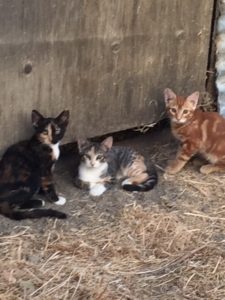 attempt to care for them.
attempt to care for them.
Yesterday, 15 dogs and 3 cats were found tethered without shelter or water at a home in Texas.
Cruelty and abuse is still happening. It stops when we report what we see. Be observant and diligent. That’s how we save innocent animals. Here’s a site designed to help you identify when a cat lover crosses over into hoarding behavior and how to help the animals that could be in danger: https://www.catbehaviorassociates.com/animal-hoarding/
Most of the time the hoarder lives away from neighbors—not in a tract where everyone knows your name and your habits. It’s often a case of out of sight, out of mind, yet the horror for the animals is real. This year, aside from those incidents mentioned above, hoarders have been identified and punished and the animals saved in Colorado, Pennsylvania, Montana, New Jersey, Iowa, Arizona…Remember, see something—say something.
Announcement My article about my writing style, habits, etc., and what I advise other writers appears in SPAWNews, the monthly newsletter for SPAWN (Small Publishers, Artists, and Writers Network) this month. It’s called “The Writing Game on Steroids.” I was asked to write it because I am such a prolific writer. Check it out here: https://spawn.org/the-writing-game-on-steroids





